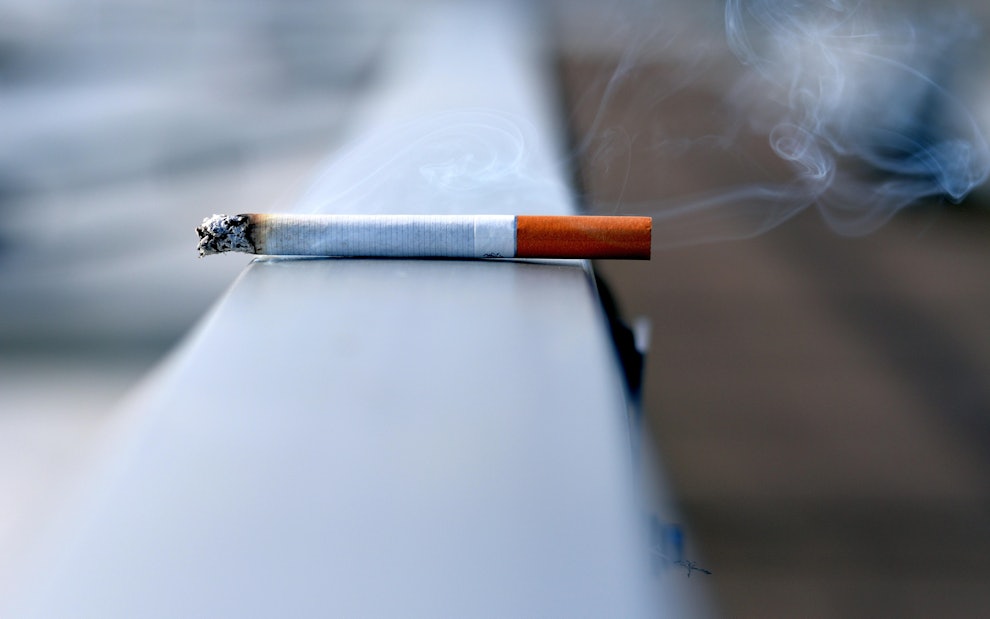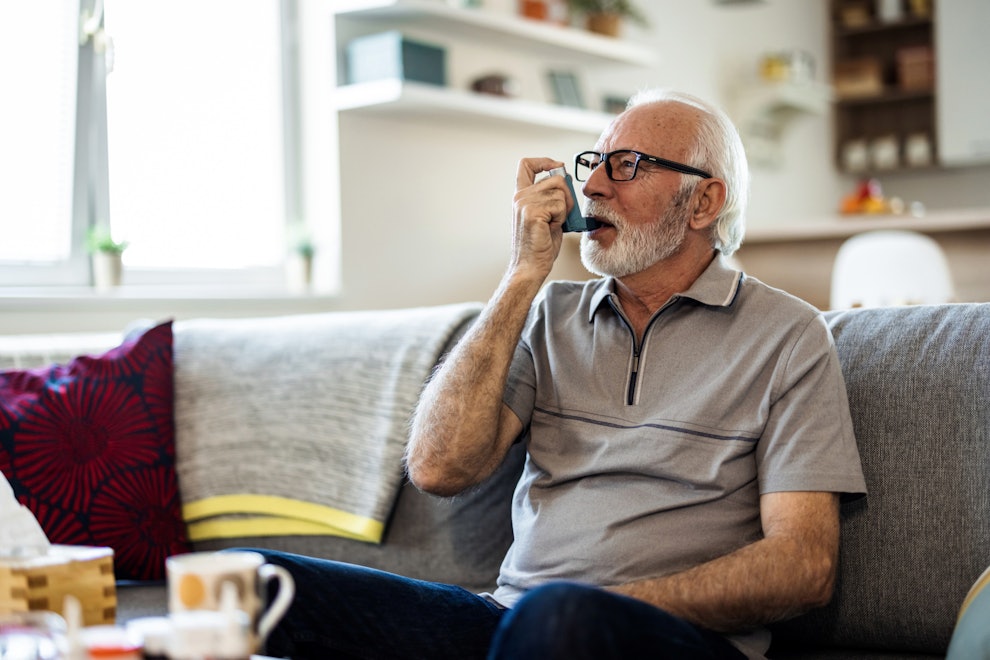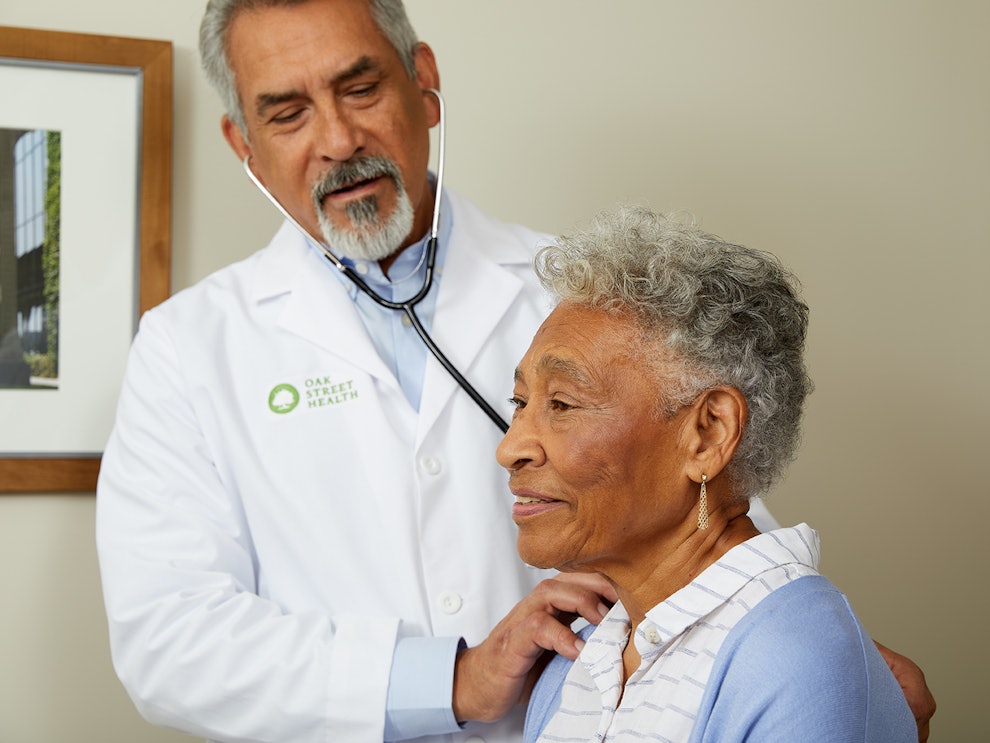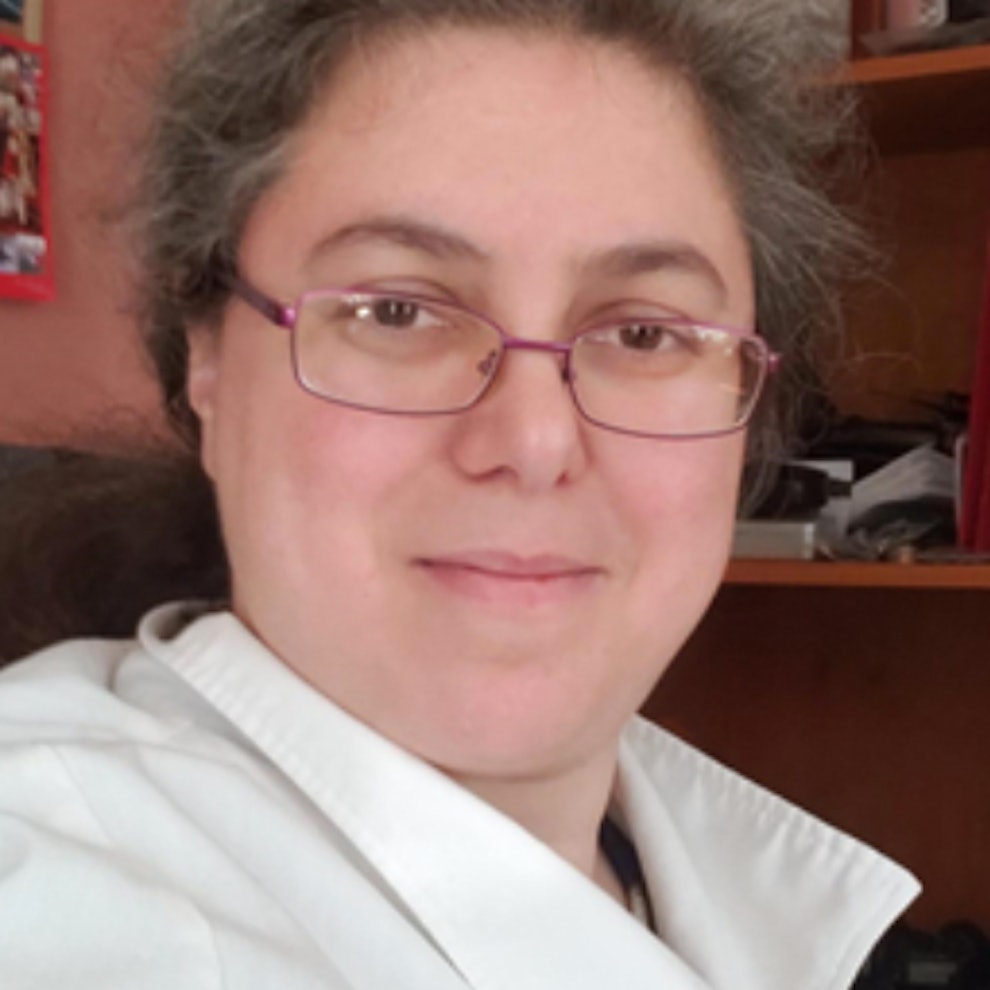Chronic Obstructive Pulmonary Disease: COPD Symptoms, Causes, & More
Article at a glance
Chronic obstructive lung disease, also known as chronic obstructive pulmonary disease or COPD for short, is a group of progressive lung diseases that impact breathing.
Symptoms of COPD include a chronic cough, excess phlegm, shortness of breath, and breathing difficulty (especially in regard to taking a deep breath).
Tobacco smoke from cigarette smoking is the biggest risk factor for developing COPD.
There is currently no cure for chronic obstructive pulmonary disease but treatments are available.

Chronic obstructive pulmonary disease, also known as COPD, is a group of various diseases that impact airflow and cause breathing problems. COPD affects 16 million Americans. While there is currently no cure for COPD, it can be managed with proper treatment.
This article will discuss the basics of chronic pulmonary disease including symptoms, causes, risk factors, treatment options, and more.
What Is Chronic Obstructive Pulmonary Disease (COPD)?
Chronic obstructive pulmonary disease (COPD) is a group of diseases marked by blocked airway flow and breathing-related issues. COPD includes the following diseases:
- Emphysema: a disease which involves damage to air sacs in the lungs
- Chronic bronchitis: a condition of long-term inflammation of the bronchi, or airways that bring air to the lungs.
- Asthma: a disease that narrows and inflames the airways to the lungs. Asthma is only in some cases linked to COPD.
COPD was the fourth leading cause of death in the United States in 2018.
COPD Symptoms
Common symptoms of chronic obstructive pulmonary disease include:
- Frequent coughing and wheezing
- Excess phlegm, mucus, or sputum
- Shortness of breath
- Difficulty breathing, notably while taking a deep breath
- Chest tightness

How Is COPD Diagnosed?
To diagnose COPD, doctors use the GOLD(Global Initiative for Chronic Obstructive Lung Disease) System. The GOLD System is a way to determine COPD as well as its severity in order to best guide treatment options.
Note: Learn more about COPD diagnosis at this resource.
COPD Causes & Risk Factors
Cigarette smoke is the most common cause of COPD. In fact, most people with COPD are smokers (or used to smoke in the past). People with a family history of COPD and who smoke are more likely to develop the disease. Other risk factors for COPD include exposure to lung irritants, infections, and more.
Exposure to Lung Irritants
This includes long-term exposure to air pollution, chemical fumes, dust, etc. This could be due to occupational exposure, the environment, etc.
Additionally, those with lung infections can experience worsening symptoms of COPD.
Issues During Lung Growth and Development
Some diseases that can impact the development of the lungs during childhood or while in-utero can increase someone’s risk of getting COPD.
Certain Infections
Some infections such as HIV and tuberculosis can raise one’s risk of developing COPD.
Age
Those older than 40 and who smoke are at a higher risk for developing COPD.
Alpha‑1 Antitrypsin Deficiency
This genetic deficiency can increase the risk of COPD in individuals, especially in those who smoke or have been exposed to fumes long-term.
Asthma
One in five people with COPD also have asthma.

COPD Treatment
Treatment for COPD will depend on the patient’s symptoms and whether they have mild or severe COPD. That said, below are some common treatment options for COPD including medication, oxygen therapy, and more.
Quit Smoking
Quitting smoking is non-negotiable when it comes to COPD. This will help slow disease progression. That said, quitting can be incredibly difficult. Read the section “Tips to Quit Smoking” at the bottom of this article for advice.
Medication
Medications that treat COPD include bronchodilators (medicines that relax the bronchi), steroids (medicines that reduce inflammation), and sometimes a combination of the two. They can be given as pills, inhalers, or both. Exactly what medications are needed will be dependent on the severity of the COPD.
Pulmonary Rehabilitation
Pulmonary rehabilitation is a medical program that consists of exercise training, health education, and teaching breathing techniques. Pulmonary rehabilitation is for people with lung disease, breathing difficulty due to other medical conditions, or for those who have had a lung transplant. Pulmonary rehabilitation can help improve breathing ability as well as one’s quality of life.
Note: Learn more about pulmonary rehabilitation at this resource.
Oxygen Therapy
Oxygen therapy is supplemental oxygen delivered through the tubes from an oxygen tank. Oxygen therapy can be beneficial for those who have low blood oxygen levels. This type of therapy can be administered in medical settings as well as from home through a portable oxygen tank.
Note: To learn more about Medicare and oxygen therapy, visit this source.
Surgery
Surgery may be a good option for some people with severe symptoms from COPD. Some types of surgery include:
- Bullectomy: A surgery to remove the non-working portion of the lung
- Endobronchial Valves: A procedure that involves inserting a valve into the bronchi to allow air trapped in the lungs to escape.
- Lung Volume Reduction Surgery: A surgical procedure to remove diseased, emphysematous lung tissue.
Lung Transplant
A lung transplant is performed to remove a diseased lung and replace it with a healthy lung. Lung transplants help improve one’s quality of life as well as extend the lifespan of someone with chronic lung disease.

COPD Prevention
Ideally, one would prevent COPD from occurring in the first place. Quitting smoking is one of the best ways to lower the risk of COPD.
Tips to Quit Smoking
No matter how old you are, there is always time to quit. Below are some tips for quitting smoking.
Define your reasons for quitting: Your reasoning could be as simple as improving your health. You could also list other reasons such as saving money, keeping your family safe, etc.
Know your triggers: Triggers include emotional, pattern, social, and withdrawal triggers.
Sign-up for a quitting program: There are various smoking cessation programs available including Freedom From Smoking.
Manage stress: Because stress can be a huge trigger for smoking, managing stress is vital for helping to quit smoking successfully.
Medication: Using patches, gum, a vape, and other tools can help people wean off slowly and curb withdrawals.
Note: Get more tips and resources for smoking cessation at this resource.
Other Ways to Reduce Your Risk of COPD
That said, smoking is not the only cause of COPD. Other ways to reduce the risk of developing COPD include:
If you have a wood-burning stove or fireplace, ensure it is well-ventilated
Stay indoors if there is air pollution outside (i.e. smog)
Prioritize outdoor spaces with lots of greenery when spending time outside
Avoid secondhand smoke as much as possible
If your occupation exposes you to fumes and dust, discuss protective measures with your supervisor
COPD Complications
There are a number of complications associated with COPD.
Lung Cancer
COPD and lung cancer are linked. In fact, COPD is an independent risk factor for getting this type of cancer. As well, smokers with an airflow obstruction as opposed to those with normal lung function are five times more likely to get lung cancer.
Heart Disease
Heart disease is a major comorbidity associated with COPD, which can lead to an increased risk of hospitalization, longer inpatient stays, and death.
Pulmonary Hypertension
Pulmonary hypertension is a frequent complication associated with COPD and is linked to more frequent episodes of exacerbation, shorter survival rates, and an increased need for healthcare resources.
Respiratory Infections
People with COPD are more likely to catch the flu, colds, and other upper respiratory viruses. These illnesses usually will worsen symptoms as well as damage the lungs further.
Note: Learn more about the link between respiratory infections and COPD at this resource.
FAQ
Can lungs recover from COPD?
Currently, there is no cure, but if it is diagnosed and treated early enough, there is a higher chance of less lung damage.
What age does COPD usually start?
In most cases, COPD symptoms start showing up around 40 years or older.
Sources
- https://www.cdc.gov/tobacco/basic_information/health_effects/respiratory/index.htm#
- https://www.cdc.gov/copd/index.html
- https://www.cdc.gov/copd/basics-about.html
- https://www.nhlbi.nih.gov/health/copd/causes
- https://www.nhlbi.nih.gov/health/copd/treatment
- https://www.cdc.gov/tobacco/campaign/tips/quit-smoking/index.html
- https://www.cdc.gov/tobacco/campaign/tips/quit-smoking/index.html?s_cid=OSH_tips_GL0004&utm_source=google&utm_medium=cpc&utm_campaign=TipsRegular+2021%3BS%3BWL%3BBR%3BIMM%3BDTC%3BCO&utm_content=CDC_E&utm_term=cdc+quit+smoking&gad_source=1&gclid=CjwKCAjwkuqvBhAQEiwA65XxQJ-TwY4J9EOERlw1CvqNeydez-vikixwf_XhwUpBeR3c1cOJIv9SPxoC5ZoQAvD_BwE&gclsrc=aw.ds
- https://smokefree.gov/challenges-when-quitting/cravings-triggers/know-your-triggers
- https://www.ncbi.nlm.nih.gov/pmc/articles/PMC4718929/
- https://www.ncbi.nlm.nih.gov/pmc/articles/PMC7293405/
- https://www.everydayhealth.com/copd/guide/treatment/
- https://www.webmd.com/lung/copd/respiratory-infections-copd
- https://www.ncbi.nlm.nih.gov/pmc/articles/PMC5937157/
- https://www.everydayhealth.com/copd/the-stages-of-copd.aspx
Become a patient
Experience the Oak Street Health difference, and see what it’s like to be treated by a care team who are experts at caring for older adults.




